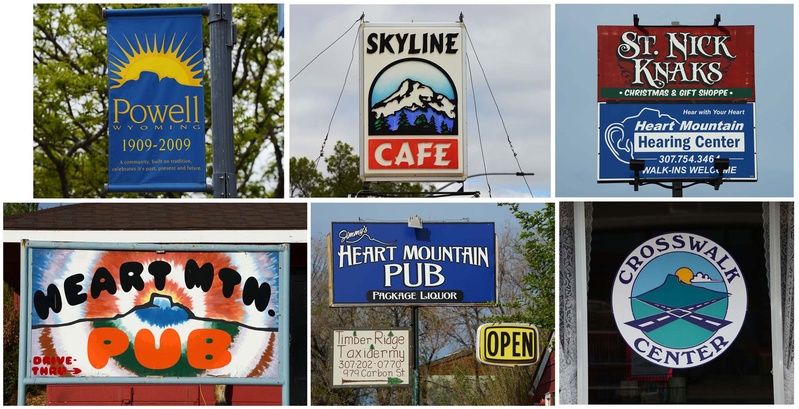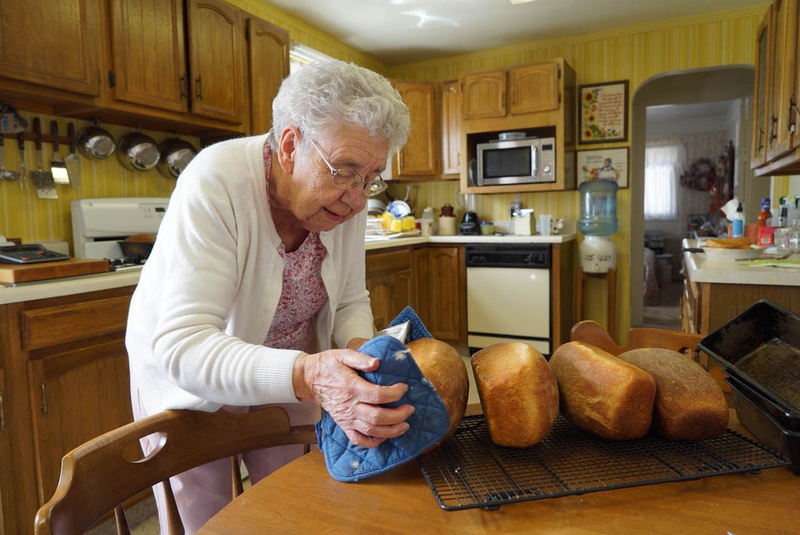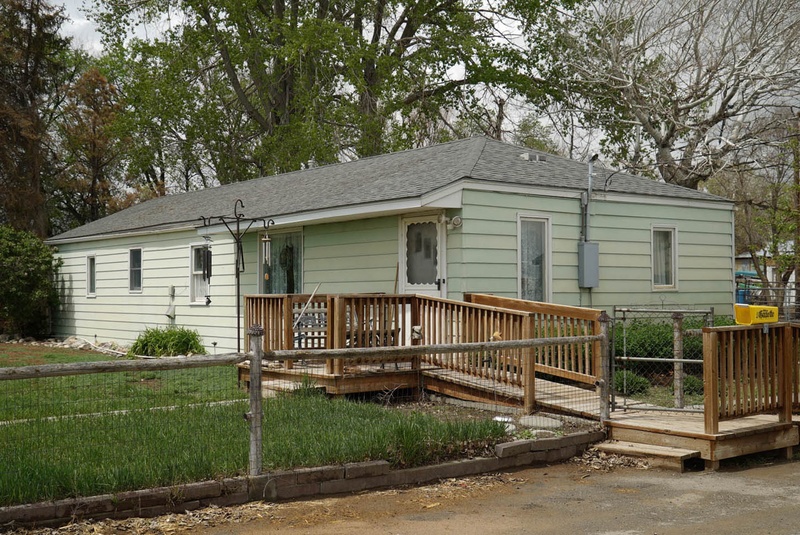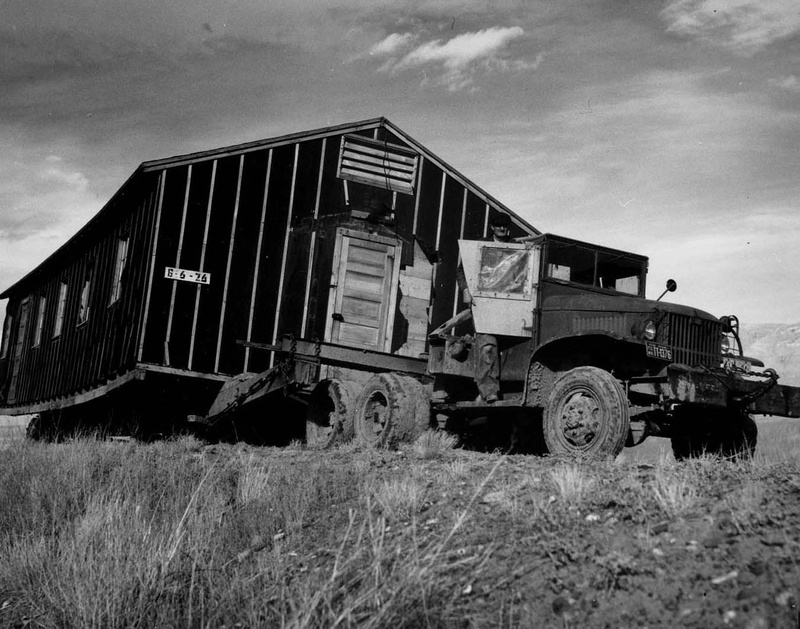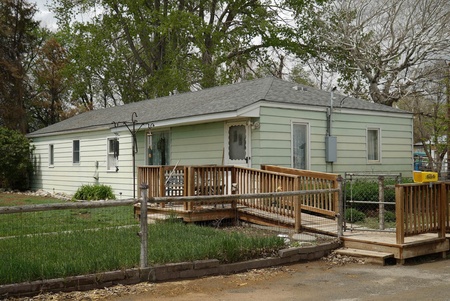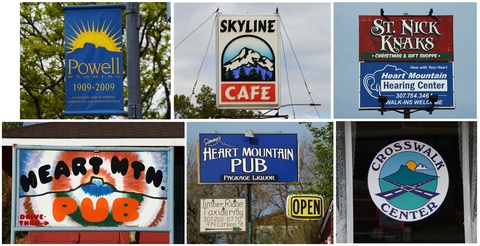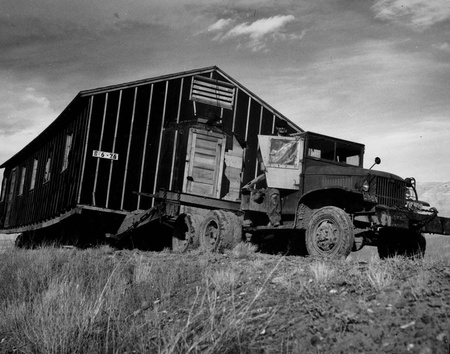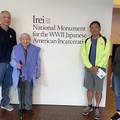I spent a month in Cody, Wyoming, on an unusual mission. I wanted to locate as many barracks as I could—buildings left behind when the Heart Mountain concentration camp closed and the last Japanese American family was ordered to leave in November 1945. I did so under the auspices of a grant from the National Park Service’s Japanese American Confinement Sites program to update my book, Moving Walls: Preserving the Barracks of America’s Concentration Camps. Twenty years ago, I had written the book to chronicle the moving of an actual barracks from Wyoming to Los Angeles’ Japanese American National Museum, a barracks that continues to give museum goers a first-hand look at the “homes” in which Japanese Americans were once forced to live.
In 1942, approximately 450 of these buildings sprang up out of Wyoming Bureau of Reclamation land to house more than 12,000 new resident prisoners to the area between Cody and Powell at a camp euphemistically known as the “Heart Mountain Relocation Center.” I already knew that after the war, the buildings were sold to homesteaders for one dollar each, and I was on a quest to find any sign of any that remained. Since Bacon Sakatani, aka “Mr. Heart Mountain", had given me a quick tour last August, I knew there were plenty to be found.
When I arrived, I felt a little like Indiana Jones in search of lost treasure. With no secret map to guide me, my first stop was the trailer home of LaDonna Zall, a knowledgeable local resident who was a child when the camps closed. Her memory of families leaving camp on trains with their personal belongings had left a permanent impression. She now serves on the board of the Heart Mountain Wyoming Foundation and is the Acting Curator at the Heart Mountain Interpretive Learning Center. As a teacher in the Cody and Powell area for 37 years, she was well acquainted with many of the residents of Park County (which includes Cody and Powell). Serving as my tour guide on an exclusive driving tour of Powell, she pointed right and left to buildings along an otherwise lonely side highway that were once barracks and added that there were at least 21 more structures on the main highway. I was taken aback when seeing building after building with the familiar 20' x 40' outline (remnants of the 20' x 120' originals), some still with peeling tarpaper and others transformed to form L-shaped modern ranch style homes.
As we drove along the empty highways, I saw a sea of green—miles and miles of farmland—in the plateau region known as the Big Horn Basin bounded by the Absaroka Range to the west and the Bighorn Range to the east. In the near distance, rising more than 8,000 feet was the peak that gave the camp its name. Heart Mountain was the distinctive landmark for those living in this area, and it was to become the unusual peak that quickly identified the camp. It became so recognizable that signs along the highway and in the streets of Powell adopted its familiar outline as part of their signs and logos.
I was curious about how locals reacted to the camps being built in this dry desert wasteland back in 1942. I found out that the Governor of Wyoming, Nels Smith, fought hard to keep the camp out of his state to the extent that he even told the War Relocation Authority’s Milton Eisenhower, “If you bring Japanese into my state, I promise they will be hanging from every tree.”1 Despite his entreaties, the region received its roughly 12,000 new residents, and because of the economic advantages the mass influx offered, the anti-Japanese attitude in the area was to change. According to Heart Mountain historian Mike Mackey, as late as 1942 Wyomingites were suffering from the aftereffects of the depression, and the war offered job opportunities as well as growth opportunities as mining and oil companies provided a new industry for the coal and oil rich area. Building the barracks alone gave employment to literally thousands of men, many who were farmers with little or no construction experience.
In trying to find out more about what happened when the camps closed, I learned about the distribution of the barracks in three separate drawings from 1947 to 1949 to homesteaders who each received both farm acreage and two barracks buildings. Thousands of potential farmers applied for the first drawing alone, and only 215 names were drawn, one-tenth of those who were eligible.2 The prerequisites for these postwar homesteaders were that they had to be veterans with some cash equity and farming experience.
Fortunately, one of the homesteaders from the initial drawing was still alive and living in Powell. At age 91, a spry and sharp Evaleen George lived on her own in a comfortable remodeled house that was a former barracks. It was hard to imagine that her warm, inviting living room and contemporary kitchen were once bare rooms with a single potbellied stove. When I arrived to interview her, there was the unmistakable smell of freshly baked goods in the air. When a bell went off, Evaleen got up out of her comfy chair to pull six beautifully browned loaves of piping hot bread from her oven.
As cozy as her present living situation was, she spoke of a time when her home consisted of bare wood with no insulation and only a Warm Morning (or potbellied) stove to heat a corner room. She and her husband arrived with their infant son with only seventeen dollars in their pockets to what has been called the coldest winter in Wyoming history. Temperatures sank as low as minus 30 degrees, and the fierce wind cut through the shoddily constructed barracks. The buildings had been moved onto their homesteads by cutting them in half and loading them onto giant moving trucks. Evaleen was quick to point out that unlike the Japanese Americans living in camp, the homesteaders had no running water, no latrines, and no electricity. She neglected to mention, however, that the homesteaders were there by choice. She went on to say that she and other women would travel down to the former camp with five-gallon cans just to get drinking water. They would also use the facilities at the camps to do their laundry—including ironing their clothes—and to take a shower.
Hardships were many for this sturdy group of farmers who came from all parts of the country to try their hand at growing hay, barley, and alfalfa, among other things. In addition to meager living conditions in dwellings unfit for most modern-day inhabitants, they had to farm on land that was covered with sagebrush on dry and rocky soil. With the 1906 construction of the Shoshone Dam bringing water to the area’s dry soil, farming emerged as an important part of the Powell economy. Homesteaders began by building and maintaining their own irrigation ditches, a process that required hand digging at least three times a day to channel water from the nearby Shoshone canal.
Japanese American agriculturists in camp had preceded the homesteading farmers with knowledge and expertise unafforded the homesteaders. Under the experienced leadership of agricultural supervisors Eiichi Edwin Sakauye and James Ito, soil and seed science was utilized to produce 1,605 tons of produce in the first year alone. Given the dry land and rocky terrain, it was a marvel the camp produced such diverse crops as bok choy, daikon, cabbage, cantaloupe, and a host of other fruits and vegetables, which provided food for the thousands of people incarcerated there. Additionally, the camp became a boon for homesteading farmers since detainees helped to complete the much needed irrigation system in the area.
Unfortunately, many of the homesteaders who came after the camp closed did not survive the area’s harsh conditions. Those who managed to persist transformed the barracks into modest living accommodations and comfortable homes that remain in the area today. Some of the barracks buildings that were makeshift homes during the early part of their farming lives were either moved or converted into barns and sheds. Some were destroyed in accidental fires. Still others were scattered throughout the Big Horn basin and beyond. If not transformed into houses, they became stores, motels, and even churches. Curiously, there are barracks that can be found as far away as the towns of Riverton and Shell (up to 160 miles away from Powell), and one can only imagine how difficult it was to get them there.
At the conclusion of my month-long stay in Wyoming, I felt overwhelmed by the information I had collected and the myriad of barracks buildings I had seen. What seemed at first an impossible task turned out to be an extremely productive and thought-provoking one. Not only did I learn that hundreds of barracks survived the 73 years since their construction—some with the original Celotex and tarpaper—I was able to talk to the people who made these buildings come alive long after the last Japanese Americans left. The buildings’ transition from camp to Wyoming landscape told a unique story of adversity, resilience, and renewal.
Notes:
1. Daniels, Prisoners Without Trial: Japanese Americans in World War II. New York: Hill and Wang, 1993, p. 57.
2. Wasden, Winifred, Modern Pioneers, Powell: Northwest College Printing, 1998, p. 6.
© 2015 Sharon Yamato



